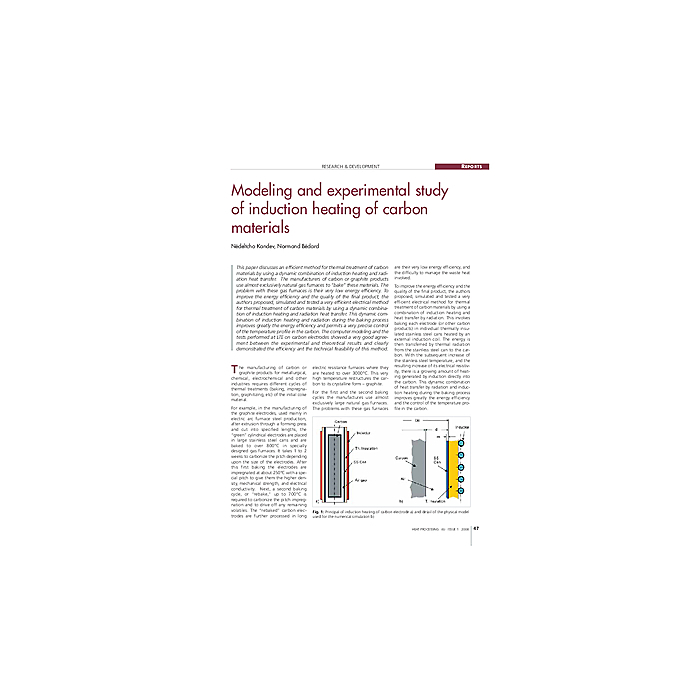Modeling and experimental study of induction heating of carbon materials
€4.90
In stock
article number
00541_2008_01_08
This paper discusses an efficient method for thermal treatment of carbon materials by using a dynamic combination of induction heating and radi-ation heat transfer. The manufacturers of carbon or graphite products use almost exclusively natural gas furnaces to «bake» these materials. The problem with these gas furnaces is their very low energy efficiency. To improve the energy efficiency and the quality of the final product, the authors proposed, simulated and tested a very efficient electrical method for thermal treatment of carbon materials by using a dynamic combina-tion of induction heating and radiation heat transfer. This dynamic com-bination of induction heating and radiation during the baking process improves greatly the energy efficiency and permits a very precise control of the temperature profile in the carbon. The computer modeling and the tests performed at LTE on carbon electrodes showed a very good agree-ment between the experimental and theoretical results and clearly demonstrated the efficiency ant the technical feasibility of this method.
| Authors | Nédeltcho Kandev/Normand Bédard |
|---|---|
| Publishing Date | 1 Jan 2008 |
| Format | |
| Zeitschrift | heat processing - Issue 01 2008 |
| Publisher | Vulkan-Verlag GmbH |
| Language | English |
| Pages | 4 |
| Title | Modeling and experimental study of induction heating of carbon materials |
| Description | This paper discusses an efficient method for thermal treatment of carbon materials by using a dynamic combination of induction heating and radi-ation heat transfer. The manufacturers of carbon or graphite products use almost exclusively natural gas furnaces to «bake» these materials. The problem with these gas furnaces is their very low energy efficiency. To improve the energy efficiency and the quality of the final product, the authors proposed, simulated and tested a very efficient electrical method for thermal treatment of carbon materials by using a dynamic combina-tion of induction heating and radiation heat transfer. This dynamic com-bination of induction heating and radiation during the baking process improves greatly the energy efficiency and permits a very precise control of the temperature profile in the carbon. The computer modeling and the tests performed at LTE on carbon electrodes showed a very good agree-ment between the experimental and theoretical results and clearly demonstrated the efficiency ant the technical feasibility of this method. |
Write Your Own Review

